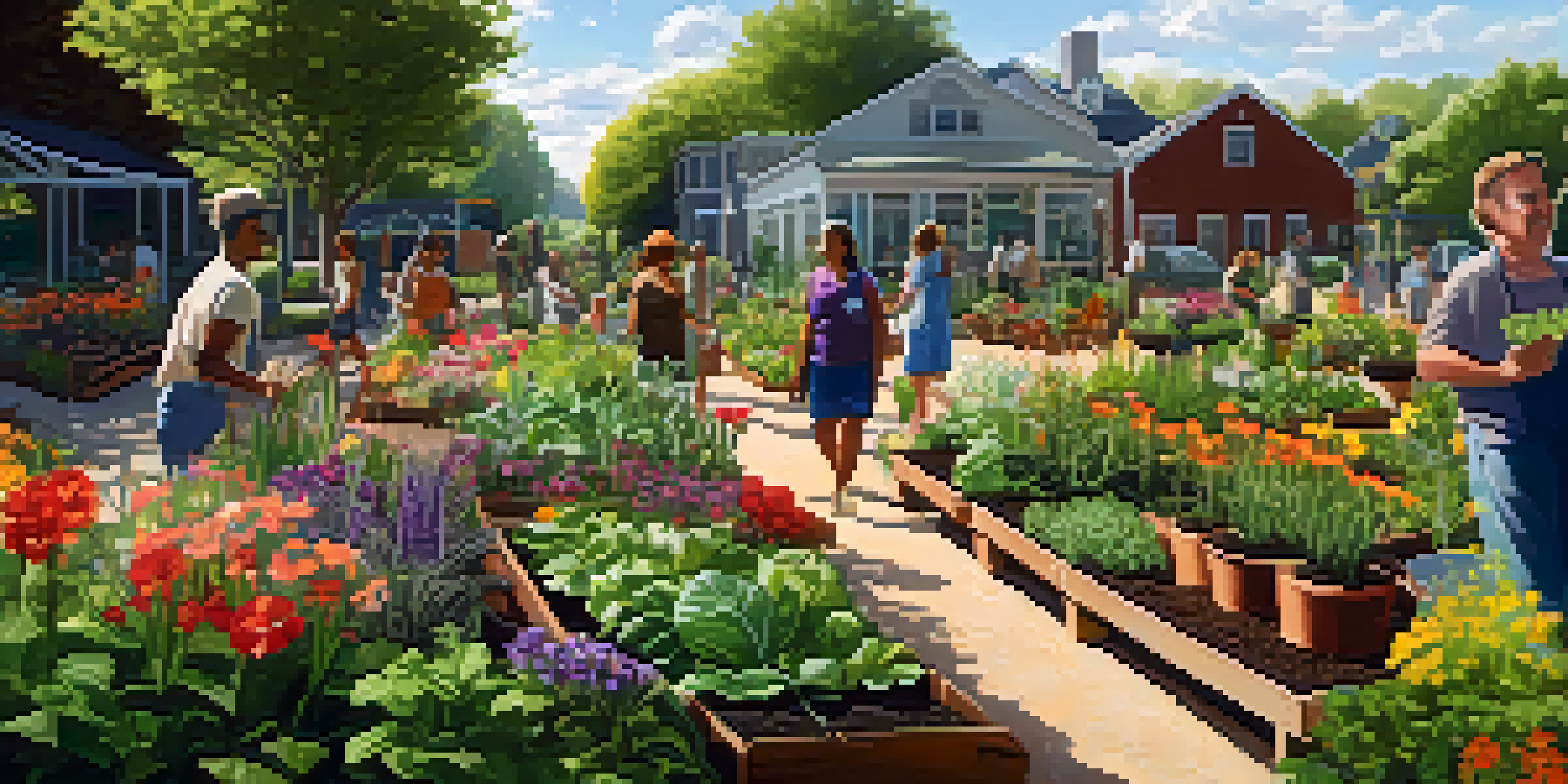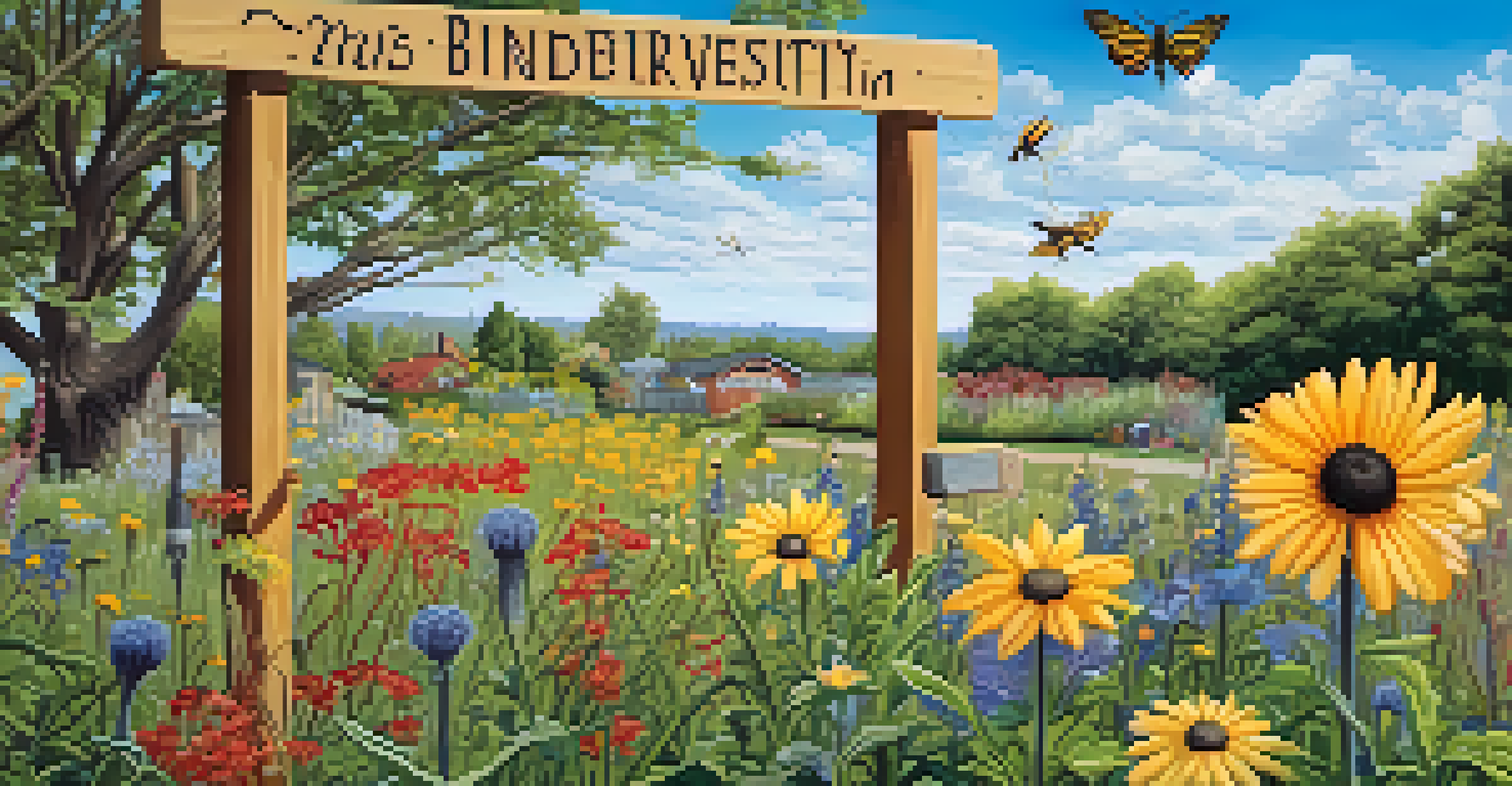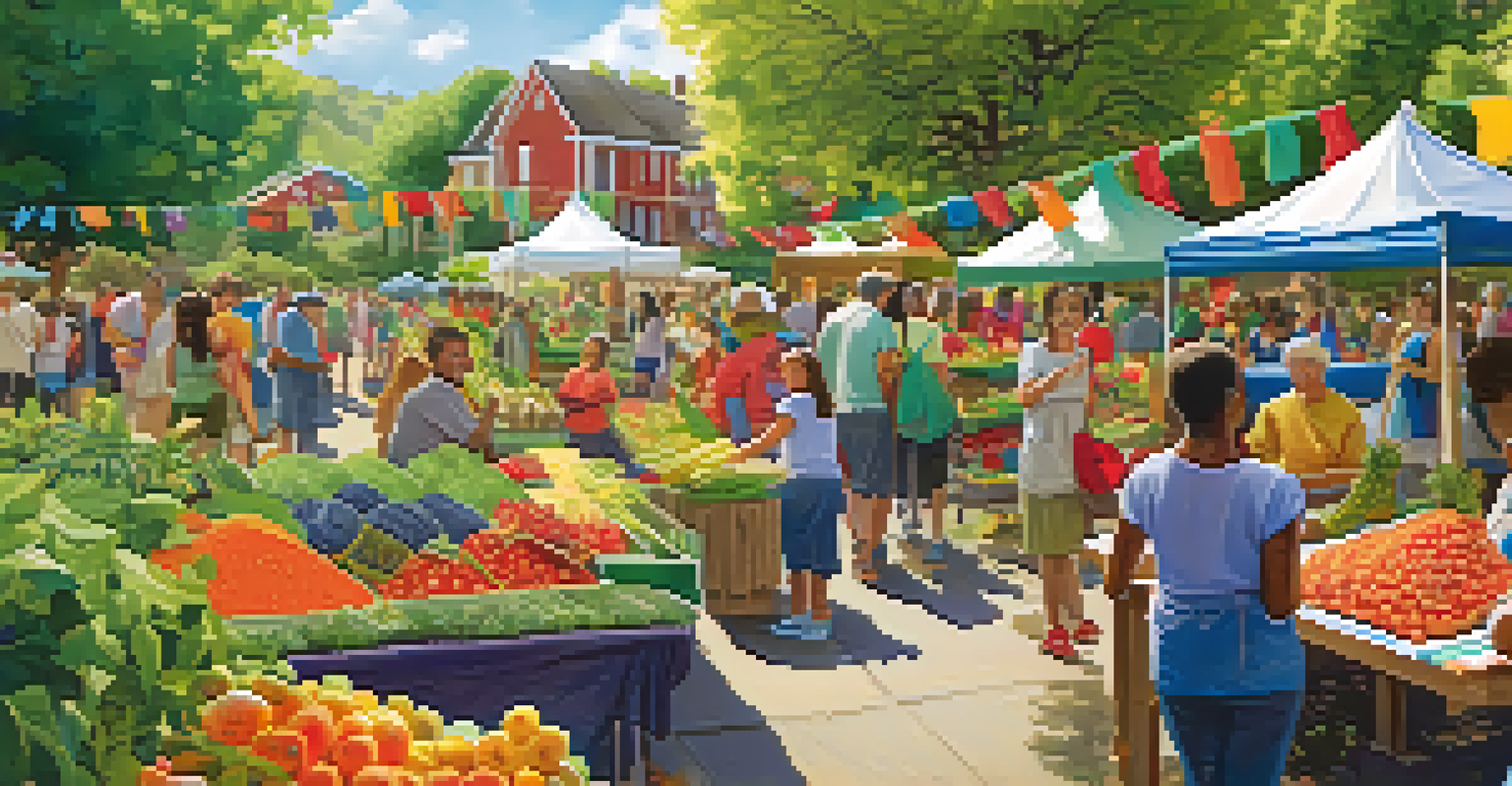Creating a Community Garden for Local Biodiversity

Understanding the Importance of Local Biodiversity
Local biodiversity refers to the variety of life in a specific place, including plants, animals, and microorganisms. It plays a crucial role in maintaining ecosystem balance, providing food, and ensuring clean air and water. By fostering biodiversity, we can create healthier environments that benefit both nature and our communities.
Biodiversity is not a luxury; it is a necessity for life.
When local species thrive, they contribute to pollination, soil fertility, and pest control, which are vital for sustainable agriculture. These factors can lead to more resilient ecosystems, capable of withstanding environmental changes or challenges. This is where community gardens come into play, acting as a sanctuary for local flora and fauna.
In essence, promoting local biodiversity helps us reconnect with nature and fosters a sense of stewardship over our environment. Understanding its importance is the first step toward creating community gardens that not only beautify our neighborhoods but also bolster the natural ecosystems within them.
Choosing the Right Location for Your Community Garden
Selecting a suitable location is crucial for the success of a community garden. Look for spots that receive ample sunlight, have good drainage, and are easily accessible to the community. Additionally, consider areas that may have previously been underutilized, as these can often be transformed into vibrant green spaces.

Proximity to local residents is another key factor; the closer the garden is to people's homes, the more likely they are to engage with it. Think about neighborhoods that could benefit from green spaces, especially in urban settings where parks may be limited. This not only enhances accessibility but also encourages community involvement.
Local Biodiversity Benefits Us All
Promoting local biodiversity enhances ecosystems, supports sustainable agriculture, and enriches community health.
Finally, ensure that the chosen site is free from contaminants and safe for gardening. Conducting soil tests and reviewing local regulations can help avoid future complications. Once you have a location, you can begin envisioning how it will transform into a thriving community garden that supports local biodiversity.
Gathering Community Support and Involvement
A successful community garden thrives on the support and involvement of local residents. Start by hosting meetings or workshops to gauge interest and gather ideas from the community. This collaborative approach fosters a sense of ownership and commitment to the garden's development.
The future will be green, or not at all.
Engaging with local schools, businesses, and organizations can also expand your network of supporters. Consider establishing partnerships that could provide resources or volunteers. When people feel connected to the project, they are more likely to contribute time and energy, helping the garden flourish.
Finally, promoting the garden through social media or community events can further boost participation. Sharing progress and inviting feedback creates a lively dialogue, ensuring that everyone feels included. Building a strong support system is essential for creating a community garden that not only enhances biodiversity but also brings people together.
Designing the Garden for Maximum Biodiversity
When planning your community garden, it's essential to design it with biodiversity in mind. This means selecting a variety of plants that provide habitats and food for local wildlife. Incorporating native species is a great way to attract pollinators like bees and butterflies, which are crucial for plant reproduction.
Additionally, consider creating different zones within the garden, such as flower beds, vegetable plots, and wildflower areas. This diversity of habitat types can support various species and encourage a balanced ecosystem. Features like water sources or compost bins can further enhance the biodiversity of your garden.
Community Involvement is Key
Engaging local residents through support, education, and collaboration fosters a sense of ownership in community gardens.
Finally, don't forget about sustainable gardening practices, such as organic pest control and companion planting. These methods not only protect local wildlife but also promote healthier plants. By designing with biodiversity in mind, your community garden can become a thriving ecosystem that benefits both nature and the community.
Incorporating Educational Opportunities
A community garden offers a fantastic platform for education and awareness about biodiversity. Organizing workshops or classes on sustainable gardening practices can empower community members with valuable skills. Topics might include composting, plant identification, or the importance of pollinators.
Collaborating with local schools can also create hands-on learning experiences for students. Field trips to the garden or school-based projects can inspire the next generation to appreciate and protect local biodiversity. These educational initiatives foster a sense of responsibility toward the environment.
Moreover, signage throughout the garden highlighting native species or ecological tips can further enhance the educational aspect. By embedding learning into the gardening experience, you can cultivate a community that values and actively participates in biodiversity conservation.
Maintaining the Community Garden Sustainably
Sustainability is key to the long-term success of any community garden. Establishing a maintenance plan that involves regular care from community members ensures that the garden remains healthy and thriving. This can include tasks like watering, weeding, and harvesting, which can be scheduled through a rotating volunteer system.
Incorporating sustainable practices such as rainwater harvesting, organic fertilizers, and crop rotation can further enhance the garden's health. These practices not only reduce environmental impact but also educate participants about eco-friendly gardening methods. By prioritizing sustainability, you create a garden that respects and enhances local biodiversity.
Sustainable Practices Ensure Longevity
Implementing sustainable gardening methods and maintenance plans helps maintain the health of community gardens over time.
Regular community meetings can help address any challenges and celebrate successes. Open communication allows for adjustments in maintenance practices and encourages continuous engagement. By fostering a culture of sustainability, your community garden can thrive for years to come.
Celebrating the Garden and its Impact on Biodiversity
Once your community garden is established, it's time to celebrate its achievements! Organizing events like harvest festivals or open garden days invites the community to come together and appreciate the fruits of their labor. These gatherings not only showcase the garden but also highlight its positive impact on local biodiversity.
Sharing stories and successes through social media or local newsletters can inspire others to start their own community gardens. Highlighting the species that have thrived in your garden can foster a greater understanding of the importance of biodiversity. Celebrating these milestones encourages ongoing support and participation.

Ultimately, celebrating your community garden reinforces its role as a vital resource for both people and local wildlife. By recognizing the collective effort and the garden's contributions, you nurture a sense of pride and commitment to preserving biodiversity in your community.